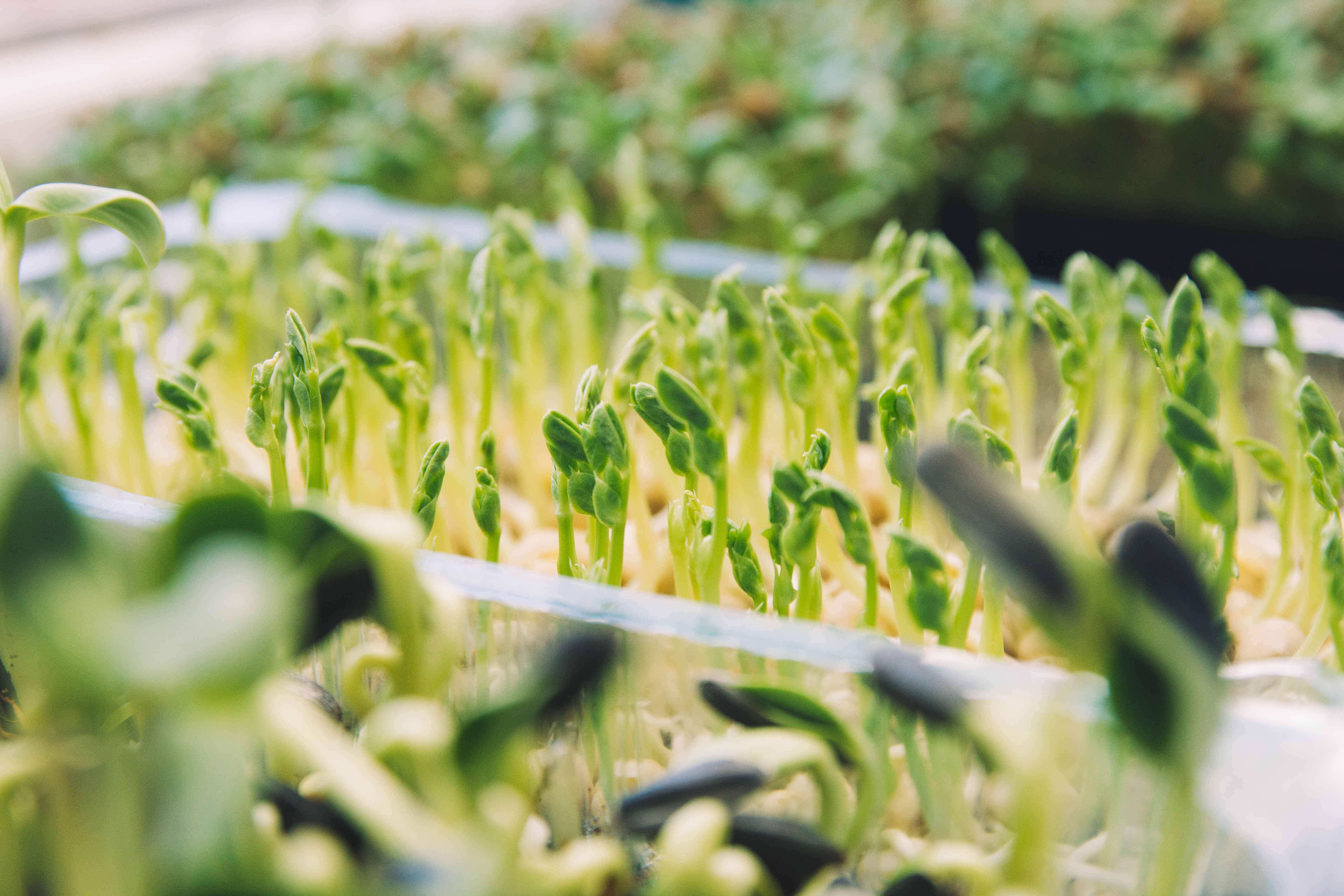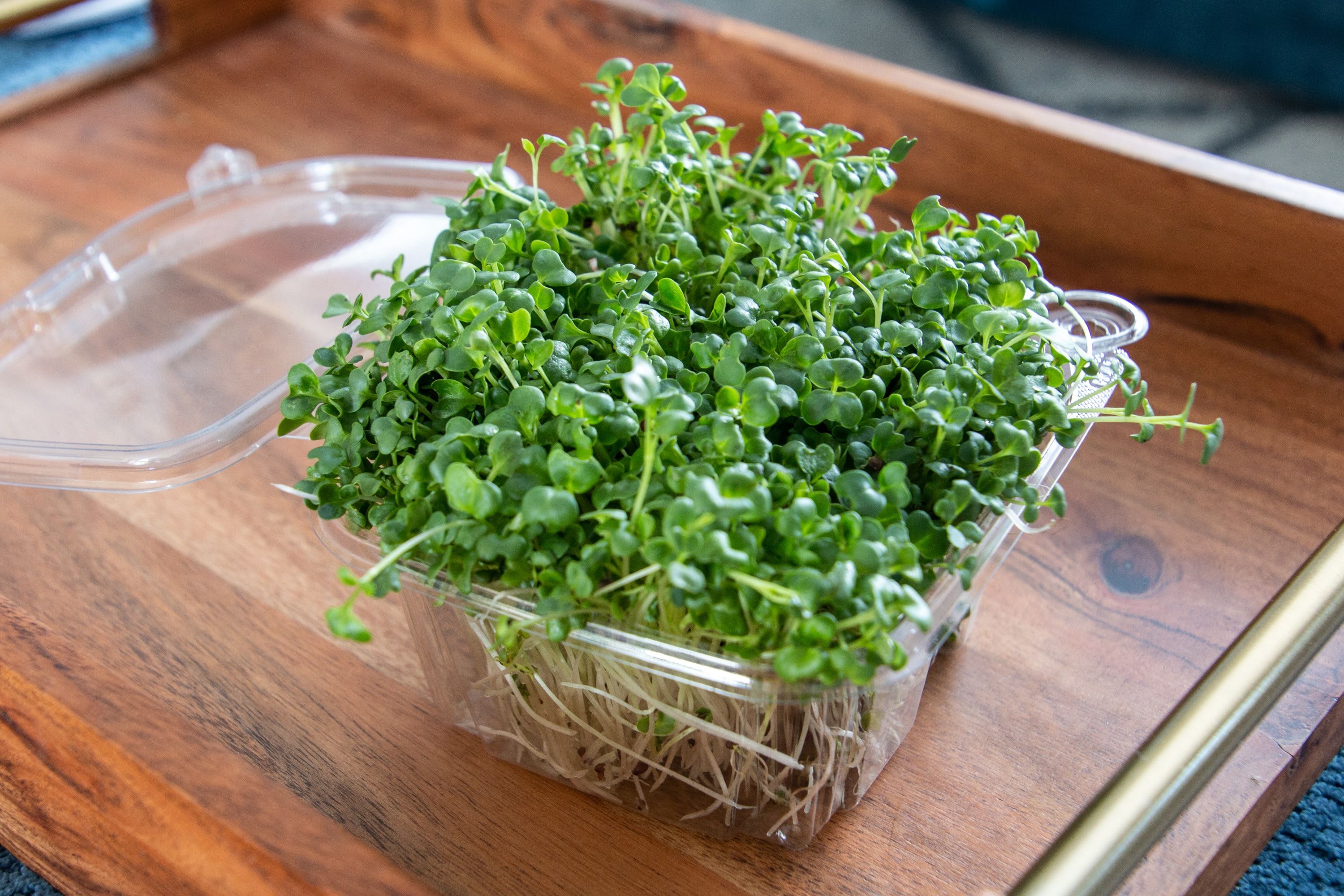Published Date January 24, 2003
Microgreens – Healthy Digestive Gut
By Hetvi Shah
4 min read
Last update date: January 24, 2003
Microgreens are tiny seedlings of edible plants. They can be easily grown in the confines of our homes and are often used ...

Microgreens are tiny seedlings of edible plants. They can be easily grown in the confines of our homes and are often used to add colour and flavour to our diet. They are consumed only after the emergence of the first true leaves, unlike the sprouts.
Even though their popularity is increasing in recent times, they aren’t consumed as much by the folks in India. However, microgreens are pretty dense in minerals and vitamins and their nutrient concentration is far better than other fully-grown plants.
Variants of Microgreens
There are several types of seeds from which microgreens can be grown. The most known variants are grown using seeds from the following plant families:
- Brassicaceae Family - A family of plants that includes cauliflower, cabbage, broccoli, and radish. The family also consists of some medicinal plants. Plants of the Brassicaceae family are said to have been used for dietary purposes from as early as 3000 BC.
- Asteraceae Family - One of the most prominent families, originated 5 million years ago in Argentina, best known for its different species of flowers such as marigolds, asters and lettuce. These are best suited to be grown as microgreens.
- Apiaceae Family - Cumin, dill, anise, and coriander seeds are some of the examples of herbs and spices that are non-poisonous variants of the family.
- Amaranthaceae Family - Grown as pseudo grain crops in the past due to their nutritive value, are only grown as microgreens for a short period of time. One of the most prevalent plants from this family is Quinoa. The plants in this family are often red in color (beet).
- A few kinds of cereal such as rice, oats, wheat, corn, barley, and some legumes like chickpeas, beans and lentils can be grown as microgreens too.
Ways to incorporate microgreens in diet
Microgreens can be included in your in many different ways such as:
- Including them in wrap fillings
- Sandwiches
- Salads/sprout salads
- Biryanis/Pulavs
- Parathas
- Omelets
- For garnishing warm dishes
- Juices
Benefits of microgreens
Because microgreens are nutrient-dense, they have more than a few benefits. Some of these are mentioned below -
- Although nutrients vary depending on varieties, all of them are rich in potassium, iron, zinc, magnesium, and copper. Certain specific varieties may be rich in some nutrients.
- Apart from these nutrients, they also contain antioxidants that protect us from heart diseases, certain cancers, and other chronic diseases.
- Ability to reduce inflammation in the body.
How to grow microgreens?
Microgreens are simple to grow and they usually flourish in bright light. To develop your microgreens follow these simple steps:
- In a planter dish or tray, scatter seeds over prepared dirt and cover them with a thin layer of soil.
- Spray the soil with water and place it near a light source.
- Mist the seeds every day to keep the soil moist.
Give it a couple of weeks and the plants will be ready to harvest. You can then use them in your unique ways in your diet. Cut them from just above the soil line and rinse them thoroughly before using them.
Risks
According to experts, microgreens can be associated with certain risks as well. Few things can contaminate microgreens very easily -
- Unsuitable Water
- The physical environment they grow in
- E Coli
Rinsing from tap water that usually contains chlorine may help to reduce the risks by up to 50 times. To avoid contamination ensure these things before buying microgreens -
- Better to grow them at home.
- If not, buy them from a source that is trustworthy.
Takeaway
Microgreens, smaller versions of edible plants, are extremely nutrient-dense and can make boring dishes look colourful and delicious. Although, the choice of seeds and the way they are grown and harvested play a major role in deciding the quality of output.
Choose Healthy With Us.
Know the real truth about your food. Stay informed and healthy, for free.

Download the App Now
Certified nutritionists trust our food recommendations. Safe to say, so can you :)











